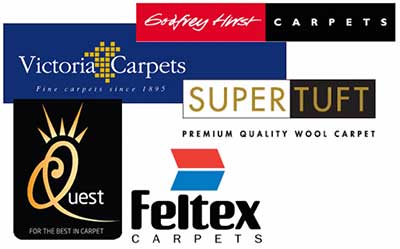Melbourne has a long history as a centre for textile manufacturing. In recent years, low Asian labour costs have cut sharply into this sector, traditionally focused around Dandenong, but, for the most part, the high-tech nature of carpet manufacturing has left it much less vulnerable than clothing or footwear manufacturing.

Why the Melbourne area?
Dandenong became our textile capital in the 1800s, with easy access to raw materials and the proximity of the Port of Melbourne and the export markets available through it. Today, world-famous carpet manufacturers like Godfrey Hirst still thrive here, and Melbourne is home to the Carpet Institute of Australia.
Godfrey Hirst is one of Victoria’s top carpet manufacturers, and R&D is a major part of what they do. One of the oldest textile plants in Victoria, they were founded in 1865 and are fully vertically integrated today, with dyeing, high resolution printing, woollen yarn spinning, synthetic manufacturing, and even a logistics company. Godfrey Hirst recently acquired another local manufacturer, Feltex. Feltex is big in the commercial sector here in Australia, but sells residential carpet under brand names like Redbook, Invicta and Minster, too.
It all began with wool
Traditional Australian carpet manufacturing was of woven or tufted wool. Tufting is a process where the yarn is inserted through the backing using U-shaped tufts. Traditional weaving processes loop the yarn through the backing in a single strand. These loops can be cut in a process known as Axminster weaving.
Local manufacturer Supertuft still does most of its business with wool fibre, although the wool is available in a wide range of finishes. Market demand has encouraged Supertuft to branch out to wool/nylon mixes.
Manufacturers branch out to high tech synthetics
Likewise, Victoria Carpets has diversified from wool-only to synthetics like polypropylene and nylon. They used to specialise in weaving, but today, they also do tufted carpeting. Victoria has become a worldwide name with two yarn mills and a carpet manufacturing plant all located in Victoria.
Quest also manufactures carpets with a range of synthetics, but still does a lot of wool. They source their wool from New Zealand, whose Merino sheep produce a fibre that has the unique property of being able to absorb and repel water; New Zealand wool is held in even higher regard than Australian wool. Wool doesn’t off-gas volatile organic compounds like petroleum-based fibres such as poly and nylon do.
New fibres being added even today
The chemistry behind synthetic fibre is what makes carpet manufacturing high tech. Research and Development is ongoing. The newest fibre is triexta, discovered in the 1940s by Dupont. Softer than poly or nylon, it also doesn’t off-gas VOCs. It was too expensive to mass produce, however, until very recently. Instead of using petroleum, Dupont discovered a way to use corn glucose. This process is so new that triexta was only recognised as a unique polymer in 2009.
Visit our retail area or check out our carpet auction and look for products from our local manufacturers!
